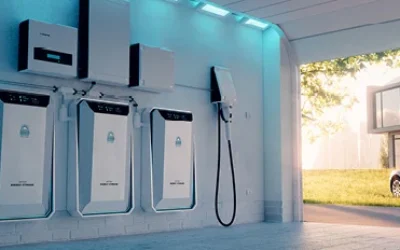
A contract with utility Southern California Edison (SCE) has led to Advanced Microgrid Solutions (AMS) supplying 2GWh of grid services from just 60MWh of energy storage during 2018, with one analyst dubbing the feat an “impressive milestone”.
AMS CEO and founder Susan Kennedy was Arnold Schwarzenegger’s chief of staff when the Terminator actor served as the ‘green’ Republican Governor of California. Her company has built up a portfolio of ‘Hybrid Electric Buildings’, deploying commercial energy storage systems at customer sites and helping them to reduce their energy bills, while also using the same Tesla battery systems to make money from grid services.
Enjoy 12 months of exclusive analysis
- Regular insight and analysis of the industry’s biggest developments
- In-depth interviews with the industry’s leading figures
- Annual digital subscription to the PV Tech Power journal
- Discounts on Solar Media’s portfolio of events, in-person and virtual
The California-based provider netted US$200m in project financing from Macquarie in 2016 and in 2017 raised another US$34m in a Series B investment round. Meanwhile, California investor-owned utility SCE awarded AMS a contract to help reduce peak demand in the LA Basin, through deploying a number of connected and aggregated battery storage systems nearby.
In 2018, 11MW / 60MWh of that virtual power plant became operational, the first phase of a project which is planned to eventually reach 62MW / 352MWh. Macquarie Capital owns the project, which AMS manages using its Armada software platform. In 2018 alone, the VPP delivered 2GWh of grid services, AMS said yesterday.
“As a whole it is a great milestone for the industry that links into the wider development of how distributed energy storage can provide critical grid services,” Julian Jansen, research and analysis manager for energy storage at I.H.S. Markit told Energy-Storage.news.
“AMS and other players in North America are leading the way in aggregating distributed energy storage to provide these type of services, whether it’s peaking capacity or other grid services that grid operators require to ensure the continuous security of [electricity] supply and an operational power grid as part of the wider transformation of the energy system.”
Last year Jansen’s team looked into the US commercial and industrial (C&I) energy storage space in detail, which we wrote about for this site and for our technical journal PV Tech POWER. Jansen said that while most competitors in AMS’ field are approaching slightly different market segments and using different business models, others are currently looking at projects – and commercial contracts – of this type in California and across the wider US.
AMS’ early successes are testament also to the assertion made in that analysis of the US C&I space that rather than hardware, leading players are focusing on the operational and software platform side of the technology. More so than hardware, Jansen said, “it’s really about creating energy solutions and utilising software to effectively aggregate and dispatch them to provide grid services.”
While the C&I systems allow businesses to cut energy costs by helping them reduce peak demand – and therefore the demand charges levied onto US industrial electric customers – the deployment of behind-the-meter storage systems for SCE has also leaned heavily on the grid services the batteries can also deliver to make the economics work in this case. AMS – and others – are effectively ‘value stacking’ (delivering multiple applications and value, often simultaneously), Jansen said.
“It’s a combination [of services] or a value stack in this case. In order to develop such a large portfolio of projects, the capacity contracts that they hold are crucial, but this is usually coupled with customer-sited benefits such as demand charge management.”






